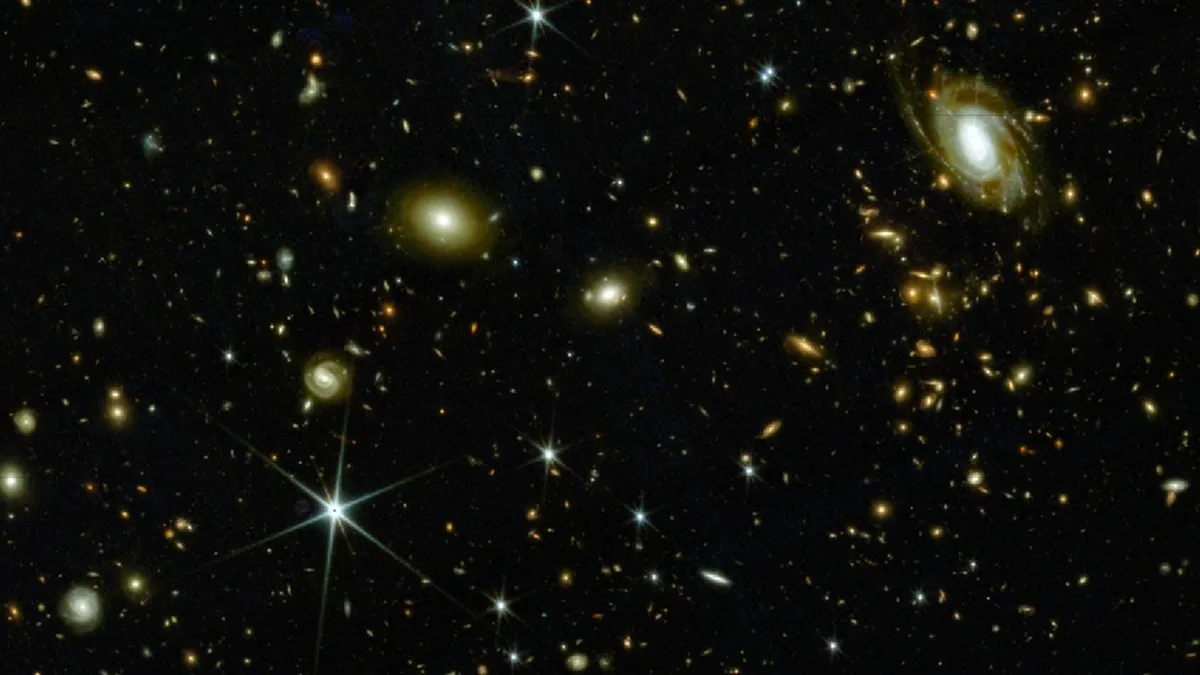
Astronomers utilizing the James Webb Space Telescope (JWST) have recently released the most extensive map of the early universe to date. This breathtaking cosmic panorama invites both seasoned scientists and enthusiastic stargazers to explore the ancient cosmos in unprecedented detail. The groundbreaking images are a product of COSMOS-Web, the largest observing program undertaken by the JWST during its inaugural year.
The COSMOS-Web survey focused on a patch of the sky that is equivalent to the width of three full moons placed side by side, marking the telescope's widest observation area to date. This survey combined over 10,000 exposures, revealing nearly 800,000 galaxies, many of which have existed since the universe's earliest eras. On June 5, the team unveiled the largest contiguous image ever captured by the JWST, along with a free, interactive catalog detailing the properties of each galaxy — a monumental cosmic record that is both vast and richly detailed.
Jeyhan Kartaltepe, an astrophysicist at the Rochester Institute of Technology and the lead researcher of COSMOS-Web, stated, "I don't know if the James Webb Space Telescope will ever cover an area of this size again, and so I think it'll be a good reference and a good data set that people will use for many years." This extensive dataset is now available for researchers at any institution to utilize for their own scientific inquiries.
When the JWST was launched in 2021, the global COSMOS-Web team, consisting of nearly 50 researchers from various institutions worldwide, was awarded over 200 hours of observation time—the most allocated to any project in the telescope's first year. While many studies focus on narrow slices of the sky, COSMOS-Web prioritized breadth, uncovering 10 times more galaxies than previously anticipated from these early epochs.
Maximilien Franco, a postdoctoral researcher in astrophysics at the University of Hertfordshire, expressed his excitement, stating, "It was incredible to reveal galaxies that were previously invisible at other wavelengths, and very gratifying to finally see them appear on our computers."
The JWST's expansive view allows astronomers not only to catalog distant galaxies but also to study how various characteristics—including size, shape, and brightness—are influenced by their cosmic environments. Jeyhan Kartaltepe noted that this information provides valuable insights into the factors influencing galaxy evolution.
Alongside the catalog, the COSMOS-Web team has published a series of scientific papers exploring the data. One notable study, recently posted to the preprint archive arXiv, investigates the most luminous galaxies at the centers of galaxy groups, tracing how their structure and star-forming activity have co-evolved over the past 12 billion years.
A key objective of the COSMOS-Web project was to map the earliest structures during the Reionization Era, which occurred more than 13 billion years ago when the first galaxies ignited and began to clear the thick hydrogen fog that enveloped the early cosmos. The team plans to use early galaxies as tracers to measure the size of reionization bubbles, vast regions where light from stars and galaxies carved out clearings in the primordial haze.
Another paper released on arXiv tests a machine learning technique to estimate the physical properties of galaxies within this massive dataset. The team also developed a new method to measure the brightness of distant galaxies more accurately. This innovative approach models how light is distributed across a galaxy, enabling more precise measurements that allow researchers to integrate JWST images with blurrier ground-based data without losing critical details.
In total, three additional studies detail the rigorous data processing efforts over the past two years, which involved aligning and cleaning more than 10,000 individual images. As a brand-new observatory, the JWST encountered unexpected challenges, including unforeseen artifacts such as noise patterns and distortions, which the team meticulously corrected.
Despite these challenges, the JWST exceeded pre-launch expectations regarding the faintness and distance of detectable galaxies. Kartaltepe remarked, "The reality turned out to be better — we were able to go deeper than what we expected." The catalog produced from this monumental effort holds incredible potential, as there remains so much we have yet to discover about the early universe.